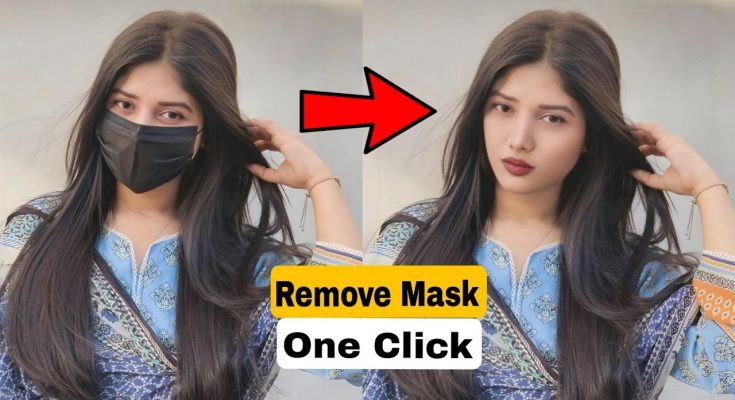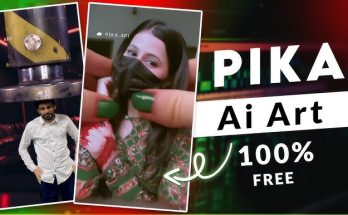In today’s digital age, photo editing has evolved beyond simple filters and touch-ups. With the help of artificial intelligence (AI), even advanced tasks—like removing face masks from photos—are now easier and more accessible than ever before.
Whether you’re editing personal photos from the pandemic or need a clean image for a professional project, knowing how to remove a mask from a face using AI can be a valuable skill. This guide walks you through the why, how, and best tools to get it done effectively. How to Remove face Mask from Photo.
Why Remove Face Masks from Photos?
Before diving into the how-to, it’s worth understanding the reasons someone might want to remove a face mask from an image:
- Personal Preference: Some prefer to see faces unobstructed, especially in memorable or personal photos.
- Social Media & Professional Use: A clear face often creates more engaging content for platforms like Instagram, LinkedIn, and Facebook.
- Creative Projects: Designers, photographers, and artists may require unobstructed facial features for aesthetic or storytelling purposes.
- Branding & Marketing: Businesses or influencers might need expressive, mask-free visuals to better connect with their audience.
- Image Restoration: As mask usage declines, some may want to “restore” photos taken during the pandemic for archival or aesthetic reasons.
Whatever the purpose, AI makes this once-complex task much more streamlined.
How AI Photo Editing Works
Modern AI photo editing tools rely on sophisticated machine learning to analyze and reconstruct images. Two core technologies often power these tools:
- Deep Learning: Mimicking the way the human brain processes information, deep learning models are trained on vast datasets to recognize and reconstruct facial features—even those hidden behind a mask.
- Generative Adversarial Networks (GANs): These involve two neural networks working together—one generates new image data (like missing facial features), while the other evaluates it for realism. The result is often surprisingly lifelike.
These systems essentially “predict” what a face might look like behind a mask and generate an image that blends seamlessly with the rest of the photo.
Step-by-Step: How to Remove Face Masks with AI
Step 1: Choose an AI Tool
Start by selecting the right AI-based software or platform. Some great options include:
- Fotor: Easy-to-use, with AI tools designed for beginners.
- DeepAI: Offers facial recognition and object removal, ideal for restoring masked areas.
- Remove.bg: Primarily used for background removal, but also capable of mask removal with smart AI features.
- FaceApp: Known for its facial editing filters; it can attempt to remove or alter masks.
- Photoshop (Neural Filters): A powerful, professional-grade tool offering AI-assisted facial editing.
Step 2: Upload the Photo
Upload your chosen photo (usually in JPG, PNG, or TIFF format). Ensure the image is high quality to get the best results, and double-check that your selected tool supports the file format.
Step 3: Detect the Face and Mask
The AI software will analyze the photo, identifying the face and detecting the mask. Some tools do this automatically, while others might require you to manually highlight the area you want to edit.
Tip: Ensure the facial features (eyes, nose, etc.) are visible and well-lit for optimal AI performance.
Step 4: Remove the Mask
Once the mask is detected, the AI generates a realistic reconstruction of the hidden parts of the face. You may be able to tweak settings to fine-tune expressions, facial structure, or details like skin tone.
Pro Tip: If the AI struggles with intricate mask designs, consider manually adjusting mask boundaries or using manual retouch tools like healing brushes.
Step 5: Review and Refine
Examine the edited photo for issues like blurriness, lighting mismatches, or texture inconsistencies. Many tools offer options to adjust blending, detail enhancement, or facial symmetry.
Optional refinements:
- Blurring: Smooth harsh edges around the mask area.
- Color Matching: Balance skin tones for a more natural look.
- Texture Corrections: Fix any odd patches with retouching tools.
Step 6: Save and Export
When satisfied with the result, export your image in your preferred format. Choose a resolution suitable for your end use—high-res for printing or professional use, lower-res for web uploads.
Step 7: Final Touches
For a polished result, consider these final edits:
- Sharpening: Enhance facial detail.
- Retouching: Even out textures and remove imperfections.
- Filters: Add stylistic effects or adjust brightness and contrast for visual impact.
Challenges & Things to Keep in Mind
While AI can do amazing things, it’s not perfect. Here are some common challenges:
- Accuracy: Depending on the image quality and tool used, results can vary. Sometimes the AI’s guess may not fully match the real face.
- Mask Complexity: Intricate patterns or coverings can confuse the AI, leading to strange results.
- Ethical Considerations: Always ensure you have permission to edit someone’s face—especially if you’re altering images of other people. Be cautious about sharing edited images without disclosing changes.
Final Thoughts
AI has revolutionized the way we edit photos, making even advanced edits—like removing a face mask—not only possible but incredibly user-friendly. Whether you’re restoring a favorite memory, refining a portrait, or creating content for a brand, AI tools offer a fast, effective solution.
As the technology continues to evolve, we can expect even more realistic results and streamlined editing processes. So next time you come across a photo with a mask you’d like to remove, let AI handle the heavy lifting.




Video aditing